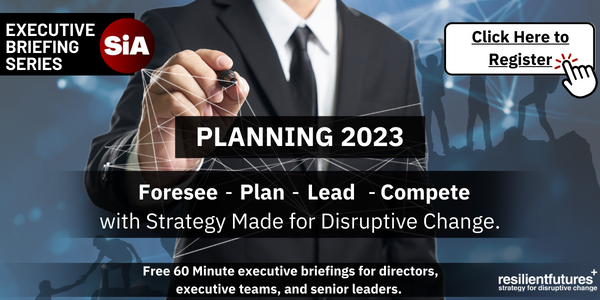The dynamics of business have evolved significantly, demanding a fresh approach to strategy and planning. Gone are the days of inflexible 'set and forget' methodologies and rigid plans that can be easily left to gather dust post final board sign off. Organisations are moving towards discarding traditional schedule-bound, and business-unit-centric planning methods, instead substituting them with an ongoing, whole-systems and conditions-conscious approach to thinking, planning and decision-making.

Planning cycles are becoming shorter and more frequent, many organisations are using 90-day planning sprints, to activate their annual plans. Strategy in Action (SiA) is a powerful methodology which has been developed over the last 20+ years. SiA offers a clear framework and toolset to support the dynamic planning that is required in the immediate and emerging conditions impacting organisations. It enables organisations to react to what is happening now and effectively prepare for what is coming next with a future focussed, nimble strategy that leverages disruptive change.
The SiA methodology is also used to shift strategic planning from a Board level exercise to one that equips all members of an organisation with a strategic mindset and toolset. It elevates strategic thinking and leadership empowering all within an organisation to move in the same direction. Using a common language and inputs from shop floor to board level, SiA supports strategic decision-making based on a robust conditions analysis and assessment of strategic opportunity-risk. With solid inputs and an organisational alignment to reality, executives can then focus on ensuring they have the right capabilities to generate sustainable value and growth.
This article presents six simple, yet essential steps for effectively incorporating SiA and its tools into strategy and planning in an ever-changing landscape.
- Know your Disruptors and Change Landscape
To prepare for disruptive change, it is crucial to monitor and anticipate changing conditions. Stay vigilant to emerging trends and technologies that could disrupt your industry or market. Use tools like the Resilient Futures SiA Foresight Ready Reckoner and the Strategy in Action Practice Community (SIAPC), an online peer-to-peer learning and networking forum, to enhance your conditions analysis capabilities.
- Understand Potentially Disruptive Impacts
Disruptive change can profoundly affect your business, industry, market, and key partners. Recognise that no organisation operates in isolation. Take the time to understand how disruptive change will likely impact your operations, customers, and stakeholders. Assess strategic opportunity-risk (SOR) in collaboration with your supply chain and value networks to power proactive adaptation of strategy and ensure fewer pinch points.
- Embrace Agility with SiA
Disruptive change can occur rapidly and unexpectedly. Agility is paramount. Instead of advocating expensive and time intensive approaches to change management, invest in your people. Develop cross-functional teams and empower them with an intuitive framework that enables them to take ownership of the change journey. Leading-edge organisations use SiA to plan, communicate across silos, and respond nimbly to new strategic challenges.
- Foster Innovation
Disruptive change is not a new phenomenon. History shows each revolution (agrarian, industrial, information tech., digital etc.) has seen disruption and disruptive change in different guises. Disruptive change creates opportunities for innovation for those who wrap their arms around disruption and embrace it. Do this by encouraging experimentation aligned to your strategic outcomes and trialling new ideas within your organisation. Nurturing an innovative SiA-based culture that learns and evolves in sync with changing conditions is key.
- Invest in Relevant Skills and Capabilities
Disruptive change often requires new skills and capabilities. Ensure that you invest in the right strategy standards and provide learning and training opportunities that enhance the development of your employees and the long-term resilience of your organisation. Learning the SiA standards and associated tools provides your people with an opportunity to get ahead of the inevitable disruptive change they will have to face.
- Prioritise Sustainable Value and Securing Future Relevance
Disruptive change can create new customer needs and expectations. Focus on understanding and meeting the changing needs of your customers and investing accordingly. A SiA tool like the Capability Matrix will help to focus your investments on capabilities that are value-adding above sector standard.
In times of relentless disruption, organisations must approach strategy and planning with a mindset and toolset that is fit for our current reality. Use the six simple steps above to ensure that strategic thinking and action becomes part of business as usual and not just an ad hoc, episodic exercises. Join us next month when we discuss using foresight to get ahead of disruption and the 10 must-watch patterns to supercharge your approach to leveraging disruptive change.
